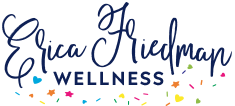Four Strength Exercises for a Happy Pelvic Floor
Pelvic Floor training is more than kegels (pelvic floor contractions).
Looking outside the pelvis and taking a WHOLE body approach to pelvic floor training can be key to improving symptoms. In many cases, MORE pelvic floor contractions may not be the solution.
The pelvic floor does not work in isolation, a key reason addressing pelvic floor symptoms, pelvic organ prolapse, diastasis recti, etc. involve the whole body.
4 Strength Training Strategies and Movements for Pelvic Floor Health
Single Leg Stability and Training: we ALL need single leg stability and the ability to stand on one leg. We do this everyday for things like walking or running. Training single leg movements improves hip strength and stability and address asymmetries side to side in the body. Stronger hips and glutes leads to a happy pelvic floor. When the musculature of the hips can do some of the heavy lifting, the pelvic floor can chill. When there is a lot of pelvic floor tension, I find that incorporating unilateral movements can be super helpful.
Exercise Examples:
Step ups
Single Leg Stand: working on standing on one leg
Single Leg hinges
Split squats
Multi-directional lunges
Tap backs
2. Eccentric Glute Length and Control
Muscles love working through their full range of motion. In postpartum training I see a lot of band pulses, clamshells, banded hip thrusts, etc. While I’m not hating on these exercises, if we are only working the glutes at their end range, we are missing out on major glute gains and learning to load the muscles through their full range of motion.
Movements that require eccentric control / strength through length will lead to greater strength gains and happy hips.
3. Glute + hamstring strength
I love adding a lot of glute and hamstring work to my client’s programs and classes. The hamstrings work alongside the deep abdominals to control pelvis position front to back. These two muscle groups often check out during pregnancy because of postural changes and our center of mass being pulled forward (helloooo baby!). Chances are, if you are in an anterior tilt, you need some more hamstring work in your life :)
The glutes and hamstrings are your pelvic floor stability and strength from the backside. If you want a strong and functional pelvic floor and core, we want to put these guys to work.
4. Internal Rotation based movements
A lack of hip internal rotation is a big thing I see with mamas, and working to restore this can lead to improvements in movement, knee and hip discomfort, pelvic floor symptoms, and more.
There are two things to think about with internal rotation at the pelvis:
1. The hip bones rotating inward
2. The femur (leg bone) moving back in the hip socket
Due to postural shifts during pregnancy (and continue postpartum), we often don’t have enough internal rotation. Think of internal rotation as loading through the ground and creating force and power. Without internal rotation at the pelvis, shoulders, and feet, our body will add layers of compensation to continue moving forward (e.g. flat feet).
Adding internal rotation focused work adds strength and stability, and will help you regain movement options. I find this can be extremely helpful for mamas in addressing thinks like SI Joint pain, Piriformis pain, tailbone pain, leaking, etc.
Check out this Instagram post for a sample protocol for more internal rotation, as well as exercise examples below. I love incorporating hip shifting work with all of my clients :)
BONUS Tip: LOAD IT UP!
As women age, we need to lift heavier loads to improve bone density and build muscle. Heavy is relative, but strength training should be a key part of your routine. Motherhood is a full contact sport, and lifting a toddler is a lot of work!
As a coach, I help moms integrate these types of exercises within their strength training routine, helping them progress to more dynamic activities. Pelvic Floor training is WHOLE body training, and via strength training we can help manage symptoms, get strong, and feel like a bad ass.
Feel good mama.
xoxo,
Erica
